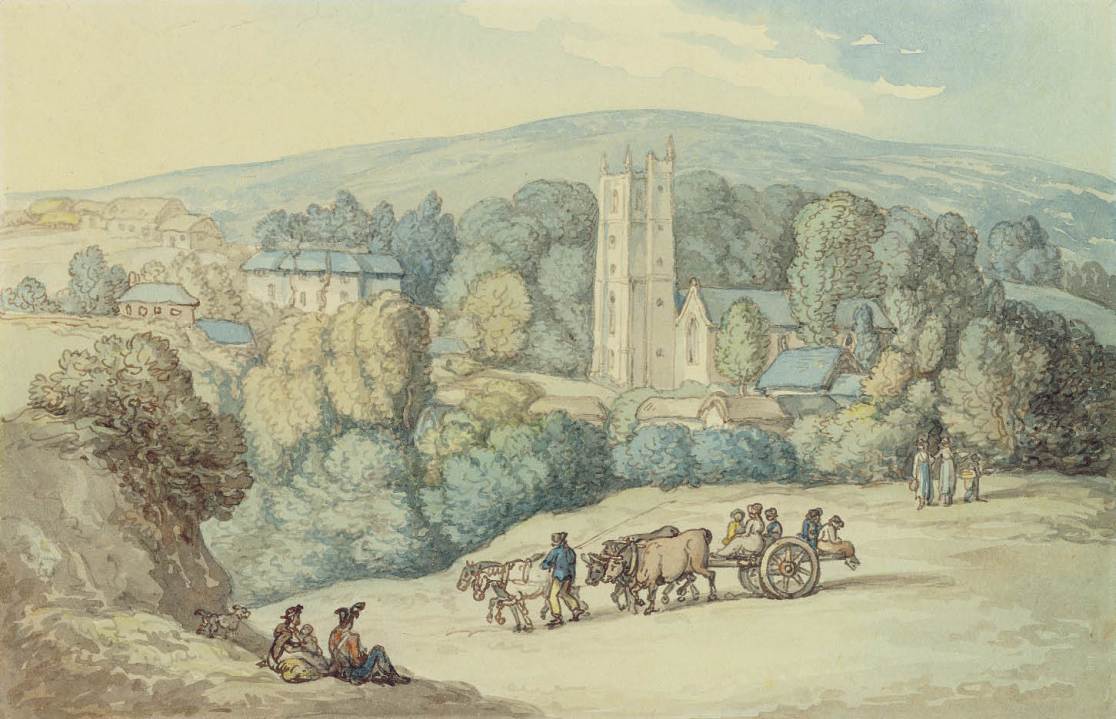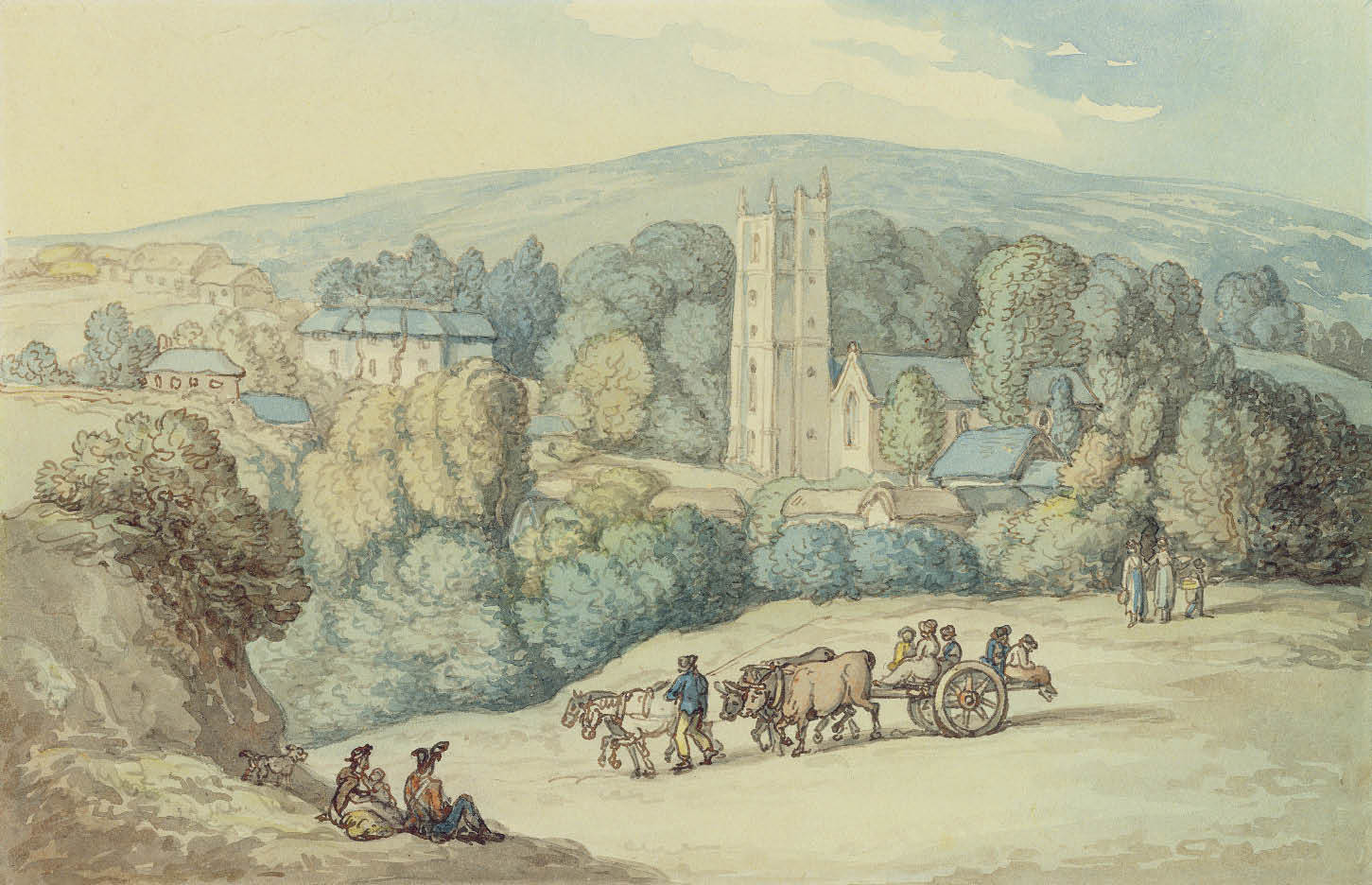Clive Aslet was the long-time editor of Country Life, and now, as its ‘Editor at Large’, is released into the environment.
Clive Aslet was the long-time editor of Country Life, and now, as its ‘Editor at Large’, is released into the environment. It obviously suits him. He writes wonderfully in Villages of Britain about building materials such as mud and stud, wattle and daub, and cob, which is where our oldest houses meet African mud huts. Cob is just earth ‘that has been sieved to a fine tilth and laid over straw; water is put on it to make it sticky, and more straw laid on top’, with a seasoning of dung and twigs. Then great lumps of it are piled up into a deep, thick wall. If cob gets wet it just dissolves into mud, so ‘old builders would stand cob houses on a plinth of stone, then plaster and limewash the walls and have them overhung by deep eaves.’ A practice that grew out of a lack of hard materials is now fashionable — ‘economic, low-energy and admirable in terms of recycling and thermal properties’. The modern bus-shelter at Down St Mary in Devon in made of cob, and thatched to boot.
Many of the listed villages are not described at all, but made the occasion for the life-stories of notable or eccentric residents and rectors, or for literary anecdotes, or essays and meditations on church-bells, watercress, gypsies, war memorials, kippers, trugs, speed-cameras, street-signage (Downham in Lancashire has banned it). The inclusion, for example, of the seaside village of Borth in mid-Wales — which may or may not be an attractive place, we aren’t told — is owed to the circumstance that in 1875 the whole of Uppingham School, Rutland, was evacuated there when typhoid, caused by bad drains, threatened the health of the boys.
The book has something in common with that other recent and successful compendium, England in Particular. It’s not a guidebook at all — there are after all lots of guidebooks — but an enjoyable and informative Miscellany, or Cabinet of Curiosities. The author is relaxed and jokey. Noss Mayo, another Devon village, ‘sounds like a sandwich’. While freezing in ill-judged shorts, he enjoys an Australian duo at Birdsedge Village Festival in West Yorkshire performing ‘quite beautifully, a song about syphylis’.
He is of course working in a tradition, and not entirely without irony. The small inset black-and-white illustrations (by the versatile commercial artist Jerry Hoare) are reminiscent of those in the infinitely nostalgic ‘Highways and Byways’ series which came out from Macmillan between the end of the 19th century and the second world war. These, like other works on the English countryside by writers such as W. H. Hudson and H. V. Morton, were leisurely meanderings in antiquarian topo- graphy, popular at a time when landscapes and villages were undergoing transformation due to changes in agricultural practice, spreading suburbs, social mobility and the motor-car — though they did not foresee the half of it. Gatwick is included in Villages of Britain — even though it never was much of a place — in reference to the airport’s retail facility, named Gatwick Village, ‘in tribute to the many villages that are either blighted by airports or have disappeared completely beneath them’.
Villages are abandoned and disappear, and rise again. Dreghorn in Ayreshire, we learn, may be the oldest village in Britain, having been continuously occupied for five and a half millennia. (It was also the birthplace of Dunlop of the pneumatic tyre.) A mere thousand years of settlement, plus with luck a certain amount of benign neglect, result in that material continuity which we seem to crave. ‘Who needs change?’ asks Aslet, in idyllic Honeychurch. The houses, pubs and cottages in the most picturesque villages, the ones that get used for period films and television series, took their present form piecemeal between the Battle of Waterloo and the first world war. They are better cared for now than at any time since they were built.
For as Aslet remarks, bracing us against sentimentality, the utter misery of rural life even in the recent past — grinding poverty, poor diet, squalid living conditions, disease, back-breaking labour — is not something anyone would want to go back to. Nor did you have to be a farm labourer to be thoroughly uncomfortable. When in 1919 Leonard and Virginia Woolf moved to Sussex, to damp and leaky Monks House in the village of Rodmell (not listed in this book), there was no electricity, no piped water, no indoor WC, and not even a workable cooking-stove. Aslet recalls meeting people in the Fens in the 1970s who rarely travelled further than a bicycle-ride from the village in which they lived in all their lives. An aunt of mine used to speak briskly of father-daughter incest in her Suffolk village as a matter of course: ‘What do you expect people to do?’
The subtitle — ‘The Five Hundred Villages that Made the Countryside’ — is a bit contentious. Did these villages — did any villages — really make the countryside? Was it not the countryside that made the villages? Settlements grew up where land was good for sheep, or for corn; to service local bigwigs or, before the Reformation, monasteries. Villages clustered along river valleys and major routes, around lead-mines, tin-mines, coal-mines, cotton-mills and fishing-grounds. It can only be said that villages ‘made’ the countryside, as they still do, in the other sense: they enhance and punctuate and humanise it. And then, there’s the small outrageous matter of that initial definite article in the subtitle, which only serves to highlight the frankly arbitrary nature of Aslet’s choices. His project makes better sense if you just delete ‘The’. Even Tony Blair was downfaced by the messianic portentousness of the definite article. However, a little mild outrage sets one up for the day.
‘The great village industries of today’, Aslet claims, ‘are tourism and retirement.’ That may be statistically true. Now, farming employs almost nobody. Shops have closed. Pubs are closing, post offices are threatened. The young long to leave. Or do they? Aslet asked a young biker in Pateley Bridge, who grumbled how deathly boring life was in the village, where he would live when he was older. ‘Here’, he replied emphatically, ‘it’s brilliant.’
It’s no part of the book’s remit to discuss life as it is lived in villages today, but the point is that the demographic is changing rapidly while no one is looking. It may not be what the young biker meant by brilliant, but it is brilliant. It’s hard, for Londoners especially, to be alive to the excellence of what can go on in a 21st-century village, and to the quantity and quality of people —whether local craftsmen or rat-race escapees — actually making useful and beautiful things, and to the many incomers running their various high-end professions from their computers, the tsunami of new community shops, the successful music and literary festivals, and the nightly creative, cultural and charitable happenings behind the closed doors of the villages through which the cars whizz on their way back to the motorway.
Meanwhile, the farmers who were here all the time struggle, and diversify, and many of their children will become farmers in their turn, because they love it. A lot of people are quite poor. But life is not uneventful for anyone. It is of terrifying intensity. I know someone who goes to London, not for stimulation, but for a rest. Think Thomas Hardy. Think Tamara Drewe. And think again.







Comments